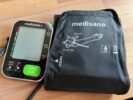The Blog Subscribe
Ian’s A to Z – A is for Aperture

Welcome to Ian’s A to Z of photography. A new word each week here on BTN! My words, and my take on them. Nothing too technical, just stuff important to me that I hope you find useful!
Aperture
Photography is a creative art, and one of the those creative tools at your arsenal is aperture. In simplistic terms the aperture of your lens is the opening which determines how much light enters your camera. This is commonly referred to as the ‘f number’ with the smaller the number relating to a wider (or more open) aperture and the larger the number (I know, confusing isn’t it?) relating to a narrower opening in the lens. So why does this matter and how can you use it?
Sure you can stick your camera into ‘P’ mode or ‘Auto’ and let the camera decide the correct aperture for the scene based on the available light, but clever control of the aperture can give you greater creative results. You see aperture isn’t just the about the amount of light entering the camera. A wider aperture also means less depth of field. Meaning throughout the shot less objects will appear in focus. A narrower aperture gives a greater depth of field. So when your taking that shot of your beloved child or pet, and the background is littered with distractions, you’ll know you can open the aperture up to f4 and make those distractions disappear. That pesky dustbin won’t be in focus. Or when you are trying to capture that amazing vista you’ll know a good narrow aperture at f16 will give you a shot in focus front to back.
There is a reason the pro’s carry around lenses that come with £000’s price tags, and that is the aperture. See a lens that offers f2.8 or better is considered a ‘fast’ lens. This is because it can let in a greater amount of light which means shooting that bride in the dimly lit church becomes a lot easier, or capturing that F1 car. The more light your camera can get the faster shutter it can achieve. Just trying shooting indoors with just a lightbulb on at night handheld at f5.6 and you’ll know why!
There are a few caveats to consider. Depth of field goes hand in hand with focal distance, i.e. how far you have ‘zoomed’ out. For example f4 at 50mm will give a considerably shallower depth of field than at 10mm. And you sensor size will play a part to. And not every lens is sharp at every f number. Most lens perform best at f8-f11, meaning they are at their ‘sharpest’ at these ranges. I know from my own experience one of my lenses is particularly soft at f22. Now this doesn’t mean it is not usable, but some thought has to go into what that shot might be used for. An upload to social media probably won’t matter as the image won’t be seen at enough detail to notice. On the other hand a 36”x24” canvas might be more noticeable.
The best tip I can offer is shoot and delete! Make the most of digital and experiment. Get to know your lenses and how changing the aperture affects your shutter speed and depth of field.
Ian
Author

Ian Lewis
 BTN Rebrands as The American Tech Network
BTN Rebrands as The American Tech Network Patrice’s Holiday Gift Guide: Books
Patrice’s Holiday Gift Guide: Books Patrice’s Holiday Gift Guide: Health
Patrice’s Holiday Gift Guide: Health tsoHost saved my bacon
tsoHost saved my bacon My first Raspberry Pi adventure
My first Raspberry Pi adventure